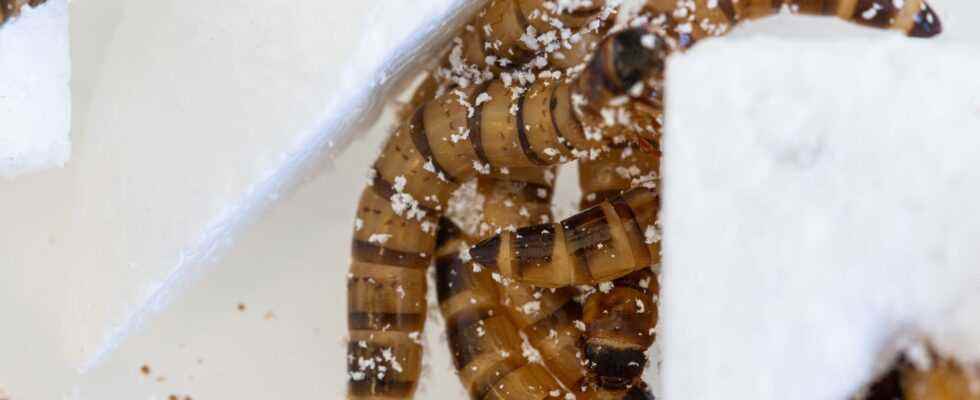What is striking in Christian Rinke’s laboratory is the frighteningly loud crunching of worm-like larvae, which eat their way through Styrofoam and burrow into blocks of plastic foam. Before throwing away a chewed pad, the microbiologist holds it to his ear to listen for stragglers. “If the worm is still eating in there,” he says, “you can actually hear it.”
Rinke and his colleagues have the larvae of Zophobas morio, the great tease beetle, called “superworms” because of their size. They fed the animals plastic to see if the microbes and enzymes in their gut could shed light on how the planet’s staggering amount of plastic waste might be broken down. The result: These super worms manage to survive only on polystyrene. The substance, also known colloquially as styrofoam, is used in a large number of products. This ability of the worms suggests that it is broken down very efficiently in the animal’s digestive tract. “They’re basically eating machines,” says Rinke, who works at the University of Queensland in Australia and is a co-author of the study, published in Microbial Genomics.
“They are basically eating machines”(Christian Rinke, microbiologist)
To investigate how the superworms’ gut microbiome reacts to a purely plastic diet, the researchers divided 135 of the animals into three groups: one group was fed only wheat bran, another only soft polystyrene, and the third received nothing. All worms were monitored for cannibalism and members of the starved group were isolated from each other. The bran-fed larvae were significantly healthier than their plastic-fed or starved counterparts and more than doubled their weight in the three weeks.
